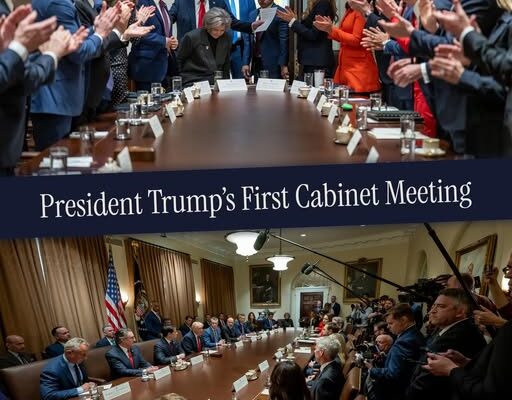Former U.S. President Donald J. Trump once stated, “We put together a great Cabinet… We’ve been given a lot of credit for having a very successful first month, and we want to make that many years…” This statement, made during his presidency, encapsulates his confidence in his administration’s early momentum and long-term vision for the country.
From the moment Trump took office in January 2017, his leadership style, policy decisions, and Cabinet selections became a focal point of national and global attention. His statement reflects two key themes: his belief in the strength of his team and his desire to extend his influence over multiple terms.
The Cabinet: A Team of Disruptors
Trump’s Cabinet was one of the most scrutinized in modern American history. He appointed individuals who were largely outsiders to Washington’s political establishment, reflecting his campaign promise to “drain the swamp.” Among his notable appointments were:
- Rex Tillerson (Secretary of State) – The former ExxonMobil CEO, chosen for his global business expertise.
- James Mattis (Secretary of Defense) – A retired Marine Corps general known for his strong leadership in military operations.
- Steve Mnuchin (Treasury Secretary) – A former Goldman Sachs executive tasked with implementing economic policies.
- Betsy DeVos (Education Secretary) – A vocal advocate for school choice and educational reform.
While Trump’s choices were praised by his supporters as bold and unconventional, they also faced criticism and resistance. Several Cabinet members either resigned or were dismissed, highlighting the turbulence that often characterized his administration.
A Strong Start Amid Controversy
In his first month in office, Trump aggressively pursued executive orders and policy shifts that aligned with his campaign promises. Some of his notable actions included:
- Withdrawal from the Trans-Pacific Partnership (TPP): A move that aligned with his “America First” trade policies.
- Immigration and Travel Ban: A controversial executive order restricting travel from several predominantly Muslim countries, which faced legal challenges.
- Regulatory Rollbacks: Trump initiated deregulation efforts aimed at reducing restrictions on businesses, particularly in the energy and financial sectors.
Despite the polarizing nature of these decisions, Trump and his administration saw these early actions as a sign of success and decisive leadership.
A Vision for Longevity
Trump’s remark that he wanted to make this “many years” was a clear reference to his hope for reelection and a lasting impact on the country’s direction. His administration’s focus on tax cuts, judicial appointments, and economic growth set the stage for a long-term Republican agenda.
However, his tenure was also marked by challenges, including impeachment trials, the COVID-19 pandemic, and ongoing political divisions. While his supporters viewed his leadership as transformational, his critics argued that his governance style was divisive.
Conclusion: Legacy and Influence
Trump’s statement reflects his belief that his administration’s early success could lead to sustained political dominance. Whether one views his presidency as a triumph or a disruption, it undeniably reshaped American politics. As he continues to play a major role in political discourse, the question remains: Will his vision for “many years” in leadership materialize once again?



